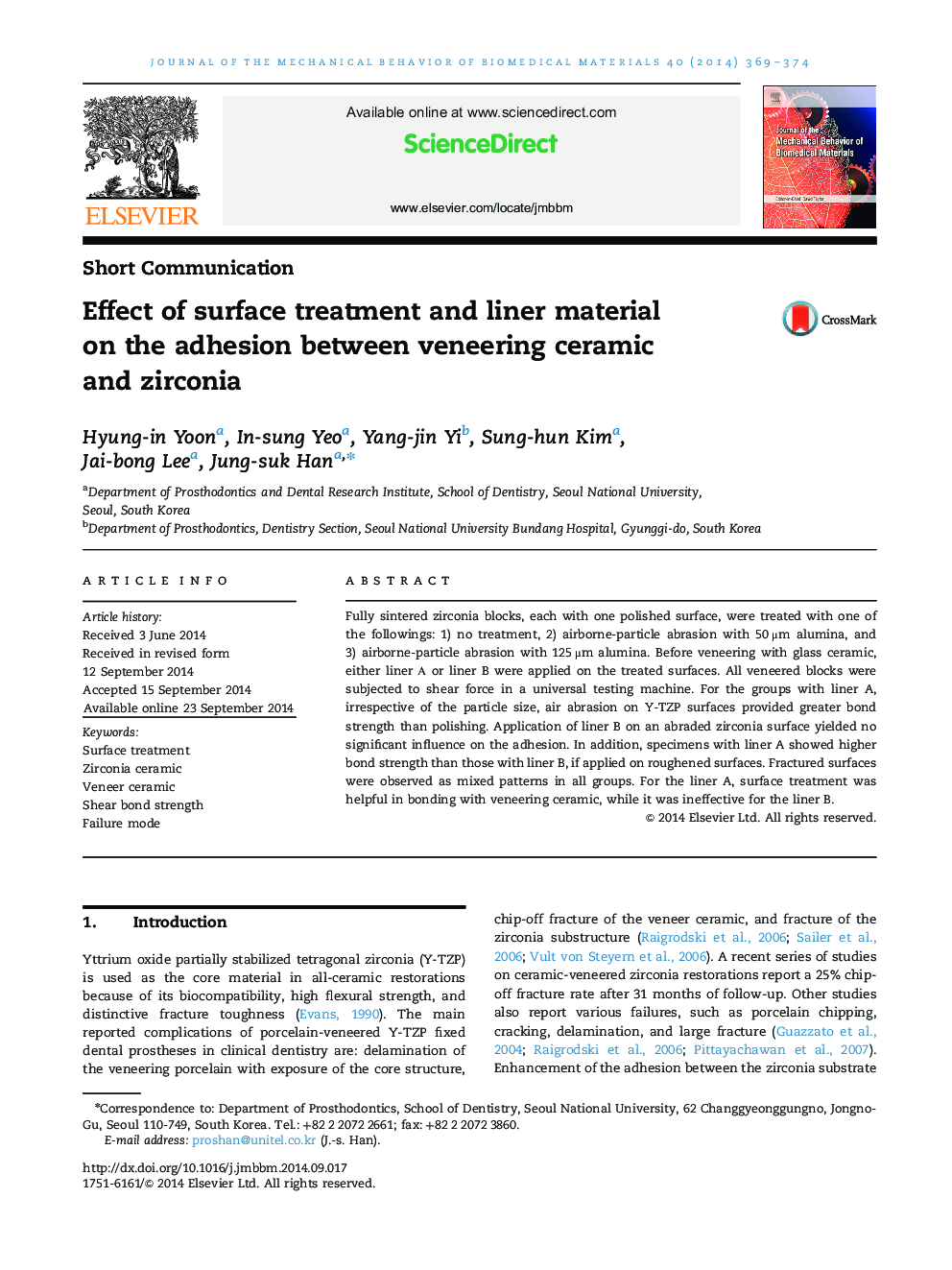| Article ID | Journal | Published Year | Pages | File Type |
|---|---|---|---|---|
| 7208754 | Journal of the Mechanical Behavior of Biomedical Materials | 2014 | 6 Pages |
Abstract
Fully sintered zirconia blocks, each with one polished surface, were treated with one of the followings: 1) no treatment, 2) airborne-particle abrasion with 50 μm alumina, and 3) airborne-particle abrasion with 125 μm alumina. Before veneering with glass ceramic, either liner Πor liner B were applied on the treated surfaces. All veneered blocks were subjected to shear force in a universal testing machine. For the groups with liner A, irrespective of the particle size, air abrasion on Y-TZP surfaces provided greater bond strength than polishing. Application of liner B on an abraded zirconia surface yielded no significant influence on the adhesion. In addition, specimens with liner A showed higher bond strength than those with liner B, if applied on roughened surfaces. Fractured surfaces were observed as mixed patterns in all groups. For the liner A, surface treatment was helpful in bonding with veneering ceramic, while it was ineffective for the liner B.
Related Topics
Physical Sciences and Engineering
Engineering
Biomedical Engineering
Authors
Hyung-in Yoon, In-sung Yeo, Yang-jin Yi, Sung-hun Kim, Jai-bong Lee, Jung-suk Han,
